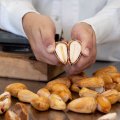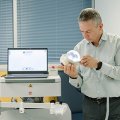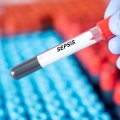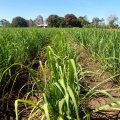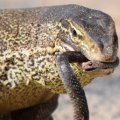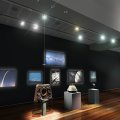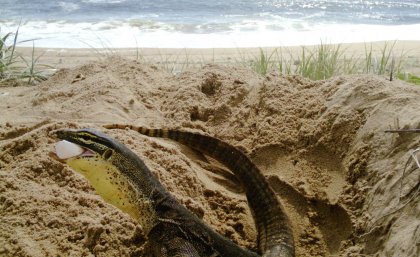
Scientists at The University of Queensland are fitting goannas with GPS tracking devices as they search for ways to stop them devouring loggerhead turtle eggs.
UQ is leading a new two-year research project to learn more about the goannas responsible for turtle nest predation at Wreck Rock Beach (roughly halfway between Bundaberg and Gladstone).
Team leader Dr David Booth from the UQ School of Biological Sciences said the GPS tracking devices were allowing the team to learn more about goanna behaviour and to test devices and deterrents including pepper, red flags and plastic mesh.
“GPS tracking indicates that yellow spotted goannas are the main culprit,” Dr Booth said.
“They spend much more time among the beach dunes than lace monitors, and no camera trap has ever shown a lace monitor initiating an attack on a nest.
“It appears that larger yellow spotted goannas are the first to attack a nest because they have the strength and persistence to dig down through the sand.
“Once there’s a tunnel to the eggs, smaller yellow spotted goannas and lace monitors also try for an easy meal,” Dr Booth said.
“If we find that a few large yellow spotted goannas are responsible for the majority of nest predation, then relocating these individuals could mean thousands more baby turtles have a chance at life.
The tracking devices do not stay on the animals for long and are not harmful.
The Nest to Ocean Turtle Protection Program, a joint initiative by the Queensland and Australian governments to address predation of turtle nests, provided nearly $180,000 funding for the program.
Dr Booth said there had been reported success overseas spreading pepper over nests as a deterrent or using flags that flap in the breeze to spook predators.
“Unfortunately, initial testing at Wreck Rock Beach has shown that pepper and flags are not particularly successful against goannas. But a simple piece of plastic mesh is proving much more promising,” he said.
“It’s lighter and much easier to transport and install than an aluminium cage and if it is set up properly on top of a nest and covered in sand it is effective at stopping goannas,” said Dr Booth.
Last year WWF-Australia supported a trial of aluminium cages placed over nests to keep goannas out.
They were successful, saving 1200 hatchlings, but each device took 20 minutes to install – not easy for a dedicated but small group of volunteers at a high-density nesting beach.
Each year more than 70 endangered female loggerheads nest at Wreck Rock Beach, the second largest mainland nesting site for loggerheads in the South Pacific Ocean.
Foxes once destroyed the majority of nests but baiting has greatly reduced their impact.
Goannas are now the primary predator, potentially eating thousands of eggs or hatchlings each year.
WWF-Australia, the Burnett Mary Regional Group, Turtle Care, and Gidarjil rangers are assisting the project.
WWF-Australia spokesperson Christine Hof said loggerhead turtles were endangered worldwide, primarily because they died from entanglement in fishing gear, boat strikes, predation, and ingestion of marine debris.
“In Australia, turtle exclusion devices on nets and fox-baiting have eased those problems but now goannas have emerged as a serious issue at the important nesting site of Wreck Rock Beach.
“A healthy Great Barrier Reef needs healthy populations of marine turtles. Helping loggerheads and other marine turtle species recover is a top priority for WWF,” she said.
Media: David Booth, +61 7 3365 2138, d.booth@uq.edu.au, WWF-Australia Senior Media Officer Mark Symons, +61 (0)400 985 571, msymons@wwf.org.au.

